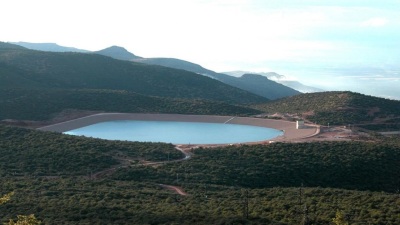
Geocomposite VS Geotextile
Geocomposite
Manufacturing
Geocomposites are geosynthetics made of a mixture of two or more geosynthetic materials such as geonet-geotextile, geogrid-geotextile, and geomembrane-geotextile.
Properties
1. Separation is to place flexible geosynthetics between different materials so that the integrity and function of the two materials can be kept intact or even improved.
2. Reinforcement is a synergistic improvement of the overall system strength produced by introducing geotextile, geogrid, or geocell into the soil or other discontinuous and separated soils.
3. Filtration is the balanced interaction between soil and geotextile, which allows sufficient liquid flow without causing soil loss and passes through the plane of geotextile within the service life compatible with the application under consideration.
4. Drainage is a balanced system of geosynthetics. Geonets, geocomposites, and very thick geotextiles all highlight this function.
5. Containment involves geomembranes, geosynthetic clay linings, or some geocomposites used as liquid or gas barriers.
Types
1. Geotextile-geomembrane composites.
2. Geotextile-geonet composites.
Advantages
1. Geosynthetics are low in thickness, light in weight, and have less space.
2. Geosynthetics are very easy to install.
3. Geosynthetics often offer cost advantages and sustainability.
Disadvantages
1. Clogging or bio-clogging of geocomposites can be a challenging design for certain soil types or unusual conditions
2. Handling, storage, transport, and installation must be ensured by careful quality control and quality assurance.
Applications
1. Basement walls.
2. Highway drainage.
3. Landfills… and more
Geotextile
Manufacturing
Usually, they are made from polypropylene or polyester.
Properties
The geotextile has excellent drainage isolation, anti-seepage, reinforcement performance, and filtering function. In addition, due to geotextile has the characteristics of lightweight, high tensile strength, air permeability, heat resistance, and frost resistance. Geotextiles are also used because of their high corrosion resistance.
They are toughness, tensile strength, compatibility, flexibility, and tearing strength.
Types
Woven geotextiles have high strengths and low elongations at rupture.
Nonwoven geotextiles are generally thicker than woven products. These geotextiles may be made from continuous filament or staple fibers.
Advantages
1. Geotextiles have good durability and strength.
2. Geotextiles are suitable for civil applications by providing separation and reinforcement.
3. It is usually a cheaper and more economical option.
Disadvantages
1. Not suitable for high-traffic areas.
2. Cannot meet the requirements of a multi-stone area.
Applications
1. For projects requiring soil separation and infiltration…and more







